Carry On Packing List For Traveling Overseas
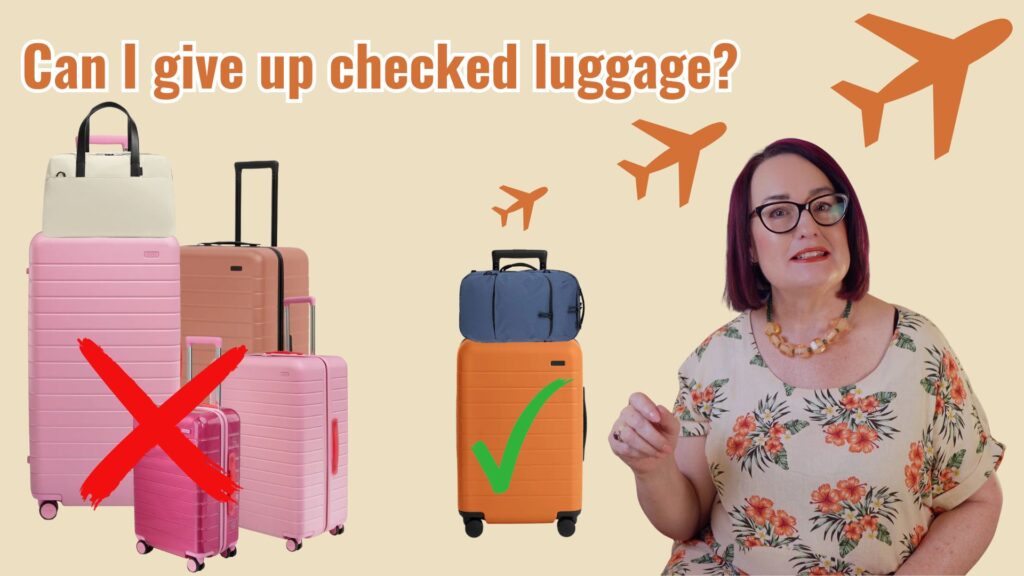
Have you wondered whether you could pack carry on only for travelling overseas? I went through my carry-on packing list for two weeks overseas, so you can see what I packed. I have carry-on packing tips and more! Join this committed baggage checker in learning how to pack it all in carry-on luggage only!
LEVEL UP Your Cruise – Things To Do FIRST
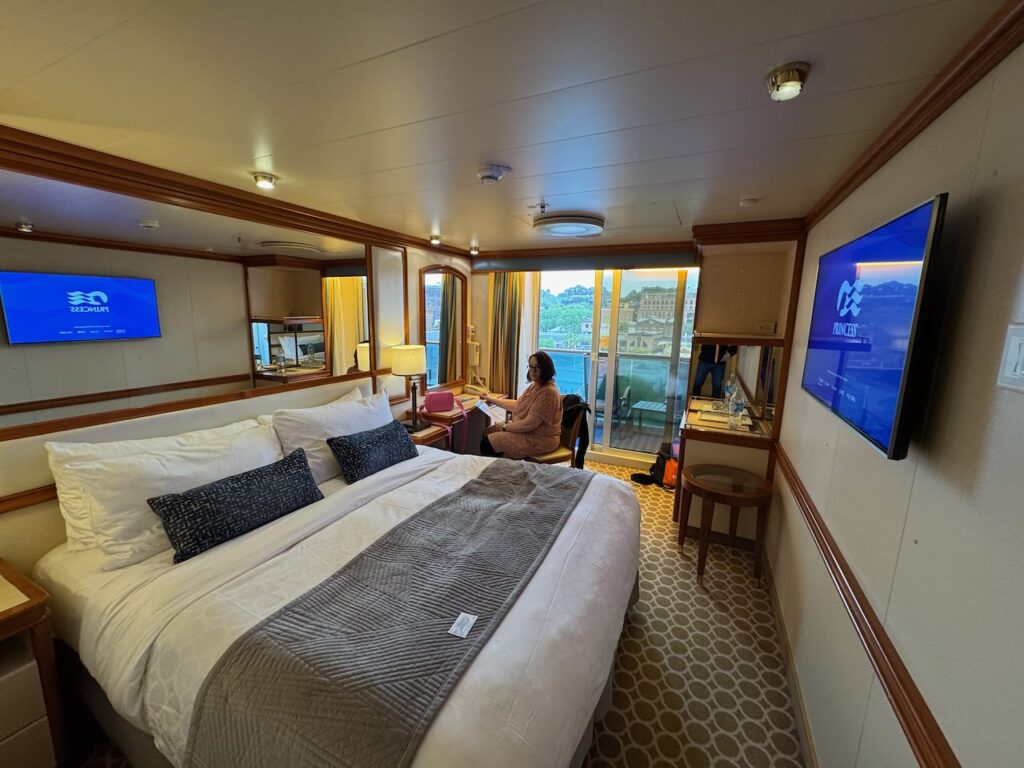
You just want to relax and enjoy your cruise, right? I’m going help you by giving you nine things to do first when you get to your cruise cabin, to make it your home from home while you’re cruising. I have cruise cabin hacks and organisation tips, so you can have your best cruise ever! I have plenty of cruise advice for first timers here, so you can have your best cruise right from the start.
What’s In My Bag – MINIMALIST EDC Essentials
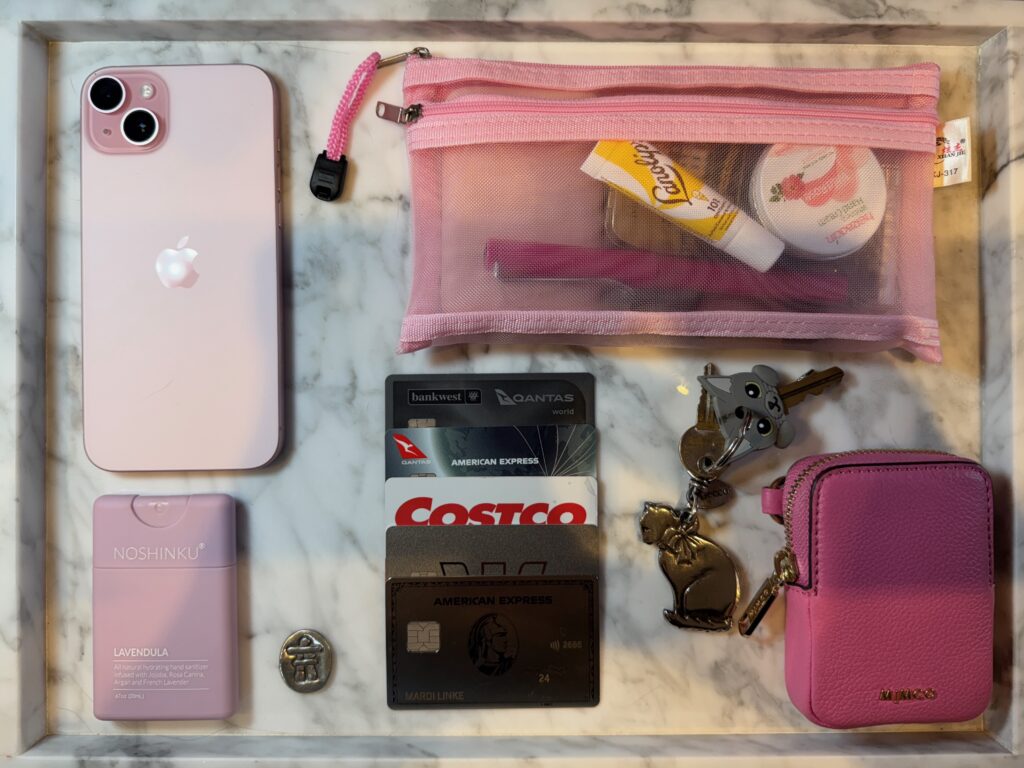
Do you want to know what’s in my handbag? I try to have a minimalist approach to my everyday carry essentials so for anyone who loves EDC, minimalism and handbags – or purses – keep reading! I’ve identified 41 items that I carry in my handbag in different scenarios. I try to keep the items I carry to a minimum and select small, lightweight versions of everything. I’m not claiming to be a minimalist, but I suffer from shoulder and neck pain so the lighter my bag the better. And to help those outside Australia, here we tend to call all women’s fashion type bags “handbags”, rather than shoulder bags, clutches, etc. And they are never called “purses”. A purse is something you keep your coins in! The items I carry My car key Like most car keys these days it’s big and chunky. I know that some car keys can be programmed onto a smart phone so the sooner Audi do that in Australia the better, then I can leave this at home! Driver licence Whether I’m driving or not this is my primary form of identification, so I always have this on me. Trolley key I use this to unlock supermarket trolleys, so I don’t have to carry a coin. I never carry cash, and I got caught so many times before I got this. Breath mints This one is up for review. I really don’t need them very often, but this is a tiny, slim holder – I think Michael got it from an animal welfare conference in New Zealand about 15 years ago! Canadian travel charm Maybe I’m superstitious but a friend gave me this good luck charm for travellers many years ago and I’ve carried it ever since. Costco card Costco cards can’t go in my iPhone wallet, so I’m stuck with this one. I could keep it in the glovebox of the car since I only ever go there in the car so this might get eliminated! Emergency $20 note I don’t use cash in Australia at all. This became part of my carry about 10 years ago when I let my car run out of petrol. NRMA – roadside assistance – brought me a can of petrol but I needed $20 cash to pay for it! I had to borrow from the business I’d stopped outside of, luckily, they were nice enough to lend it, even though they didn’t know me. It was a plumbing business, and we’ve used them for our plumbing issues ever since. And yes, I did repay them! Fold up shopping bag To avoid excessive consumption of disposable bags. Glasses screwdriver To tighten those tiny little screws when the arms of my glasses start flapping around. House key Just the one. I don’t feel the need to carry every key I possess. I always wonder why people have to carry big bunches of keys, like an olden day’s prison warden. Safe key More of a money tin really – we just keep left over international currency in there between trips. Nothing major, it’s more so we know where it is than for security! I keep the key with me for security though, rather than need. Hand cream This tiny container is perfect – I like things as flat as possible. I refill it with a fairly thick cream – a runny one might leak. Lip balm No explanation necessary! Anker magsafe power bank For phone low power emergencies – that time I ran out of petrol I’d also forgotten to charge my phone, and I didn’t have a charger in the car. Another thing the nice plumbing business lent me was a charger! Rolling Square InCharge X xmall charging cable I can use it to charge anything USB C, Micro USB or lightning if there is a USB A or C outlet to plug into. The MagSafe power bank can give my iPad a tiny charge using this cable, if I’m really desperate! Nasal decongestant I tend to get a stuffy nose quite a lot. Pen Always good to have. I have a LAMY Safari pen I bought in Japan, but it’s a bit big and chunky. I love it but I’m thinking of getting a small pen like a Fisher Space Pen or something made for EDC. The pens above are NOT to scale! Hand sanitiser Even before Covid I usually had it but now it’s more important than ever. Shout wipe If you’ve seen my video on packing for a six-week trip you’ll know I tend to be a bit of a messy eater. Small mirror This is the tiniest mirror I’ve ever found. I got it, well we got two of them, at an animal welfare conference in Washington DC in 2011. It was a gimmick – “looking into this will show you who can save these animals” kind of thing. But I’ve carried one ever since for makeup touch ups – it’s all I need and so tiny! Small scrunchie When it’s hot and sticky and I’m out and about my hair annoys me so when I’m about to go completely mad I get this out and pull my hair back. It looks awful but sometimes that just doesn’t matter! Small tin of medications Just a few painkillers, antihistamines and antacid tablets. I wrap the scrunchie around this, so they’re always together. The tin is from some souvenir breath mints I bought at George Washington’s home, Mount Vernon. Smart AirCard I bought these from a Kickstarter, they work the same as Air Tags, but they’re flat so easier to carry in small pouches and bags. Sunglasses But not very often since I can’t drive in them or read my phone in them. And only when its sunny of course! I keep them in this soft pouch, which doubles as a lens cloth. SwissCard NailCare From the makers of Swiss Army knives and with similar functions. This one doesn’t have a blade, but it does
2025 long vacation packing list
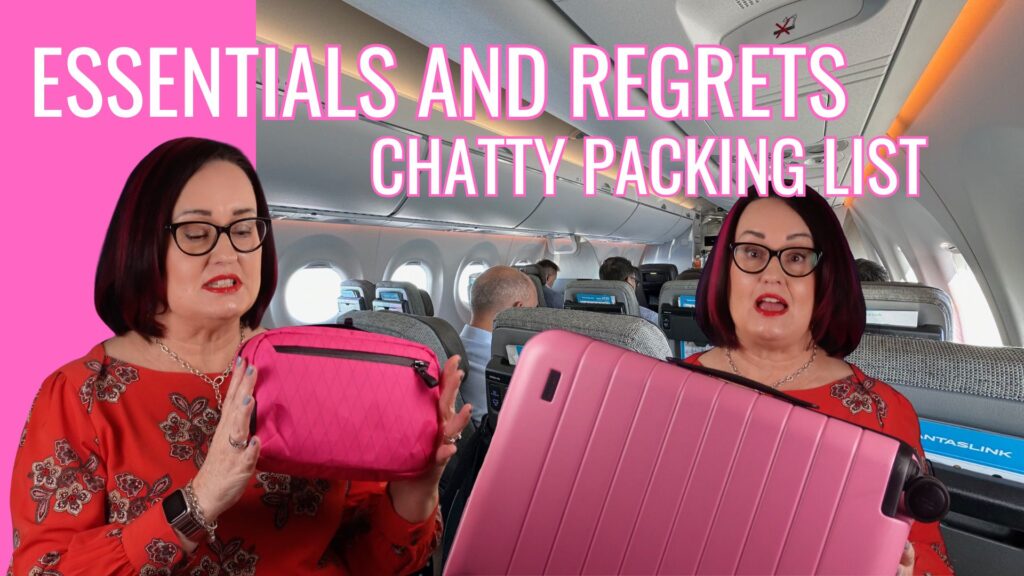
See my complete packing list and what’s in my bag as I pack for a six-week holiday and hear what I learned and what I should NOT have packed! We are travelling by air from Australia to Canada for two nights in Montreal, then cruising on Oceania Insignia through Canada and New England, arriving in New York. We spend two weeks in New York before hopping on Norwegian Prima for a cruise to Bermuda. We spend two more nights in New York then fly home to Australia. What would you pack? Disclosure: Some of the links below are affiliate links. This means that, at zero cost to you, I will earn an affiliate commission if you click through the link and finalise a purchase. Clothes Handbag and EDC Tech Makeup Toiletries Health and comfort Cruise essentials Miscellaneous
Never do these 20 things in your cruise ship cabin
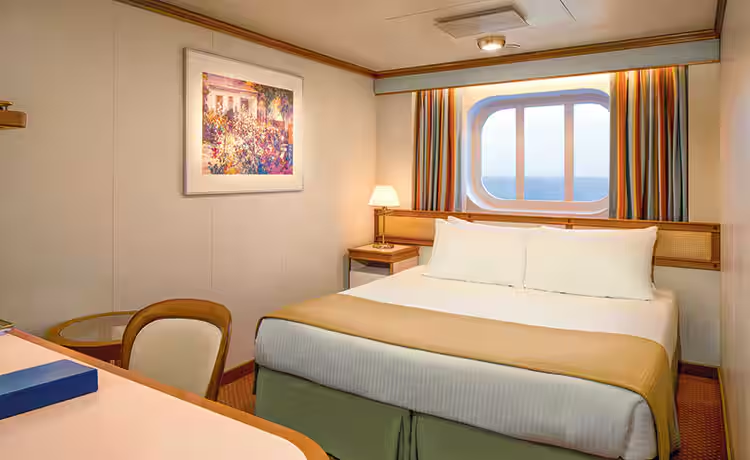
Like anything in life, cruising has things you shouldn’t do – particularly in your cabin. I have 20 of these and I’ll also include some clever tricks to help you enjoy your cruise.
LIGHTEN your travel toiletries kit
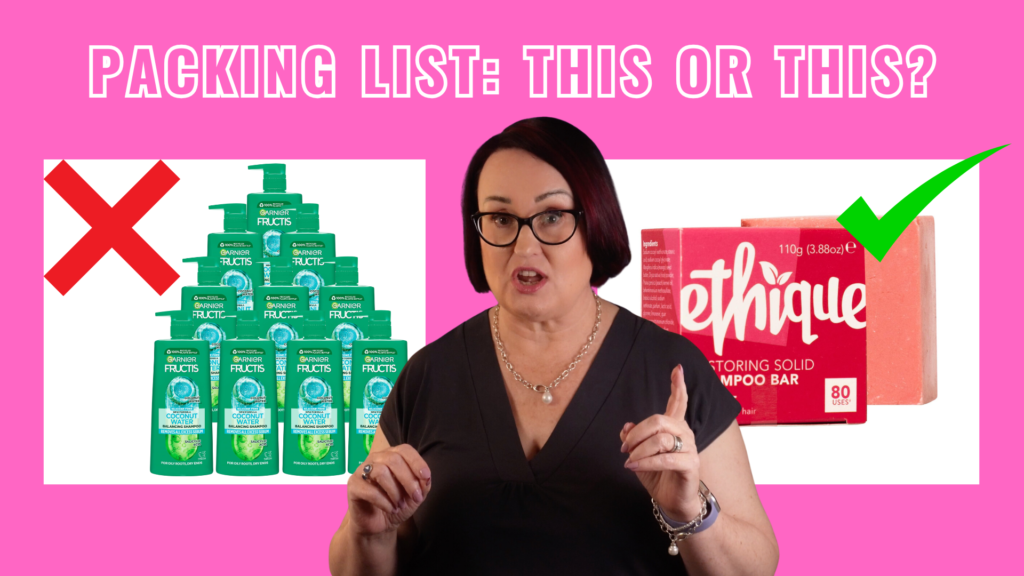
Are you attempting one bag travel or just wish you could reduce the size of your travel toiletries kit? My travel hacks will help you travel light and minimize your travel size toiletries. No more worrying about the 3-1-1 rule! Now, let me be honest—I’m not someone who travels with just a carry-on bag. I usually check a suitcase. However, over the last couple of years, I’ve been working hard to lighten our luggage, particularly when it comes to toiletries. You might be wondering why I’m so focused on packing light today. Well, we’re gearing up for a six-week adventure in North America and Bermuda! We’re incredibly excited—we’ll be cruising from Montreal to New York, spending two fantastic weeks in New York City, and then enjoying a seven-day round trip cruise to Bermuda before heading back home to Australia. But there’s been a little twist that has influenced our packing strategy—Michael recently had a fall at home! He tripped over a step (nothing spectacular) and ended up dislocating his shoulder and fracturing the humerus in two places. Ouch! He’s recovering after surgery, but since he’ll be in a sling until we depart, we need to keep our luggage light to make things easier for both of us. The bulk of our packing reduction starts with liquids. Most liquids pack a heavy punch due to their high water content. So, I want to pass on the benefits of my research to you! We’ll cover the rules for taking liquids onboard the plane, explore alternatives to liquids, discuss what to leave behind, and finally, how to pack everything effectively. Onboard liquids I’m Australian, but the TSA rules in the USA often come to mind when I think about onboard liquid regulations. Most countries have similar restrictions but remember to check the specific regulations for the country you’re visiting. For instance, the UK has different requirements for the size of clear bags! Leaving Australia on an international flight, the rules relate to powders, liquids, aerosols and gels. I won’t go into details but certain powders, such as washing powder and salt need to be under 350g but don’t have to be packed in a special bag. Liquids, aerosols and gels must be under 100ml and packed in a zip lock bag that measures 80cm or less around the perimeter. All powder, liquid, aerosol and gel products must be taken out at security. You can have one liquids bag per person. Personally, I’ve had good luck getting through without having to pull them out, but it’s always best to follow the packing guidelines just in case. Flying in the USA you have the 3 1 1 rule – each product must be under 3.4 ounces, which is 100ml, be put in a bag that is 1 quart or less (just under a litre) and one bag is allowed per person. I’ve included links in the text above, but I found this information quite easily by searching “flying liquids Australia” and “flying liquids USA” so do the same for the country you’re visiting to ensure that you know what to do. Now, we get to the tricky part—what actually counts as a liquid? Items like mascara and lipstick often cause confusion. A handy tip is to think about whether the product can hold its shape without a container at room temperature. Mascara would definitely be considered a liquid, whereas a lipstick would not—although lip gloss? Yep, that’s a liquid! Don’t forget, there are exemptions for things like medications and baby food, but it’s wise to check the regulations specific to the country you’re visiting. Of course, none of this applies to liquids in checked in bags, but if you are going to travel carry on only you will need to have a really good understanding of the rules! Replacements Why bother with liquids when you can replace them with solid alternatives? Liquid products tend to be heavier, simply because they usually have a higher water content. For example, when I weighed a litre of milk, it clocked in at about one kilo (35.27oz). Meanwhile, the milk powder to make one litre weighed only 130 grams (4.59oz). You can see it by looking at the ingredients list on any product – the ingredients are listed from highest to lowest percentage and the first one is nearly always aqua – that’s water! Take shampoo, for instance. I carry a mini shampoo bar instead of liquid shampoo when I travel. I’ve been using a sample sized bar for six weeks of travel all up, and it’s barely any smaller. I can still see the embossed pattern on it, which tells you just how little has been worn away. If I’d taken liquid shampoo I would have used a fairly large bottle over the same period, and the whole bar must be worth at least ten bottles! There are two more reasons I prefer non-liquid alternatives, and they don’t relate to travel – one is environmental – producing and transporting a shampoo bar instead of ten bottles has a much lower impact on the environment. The second is frugality – it costs a whole lot less for that one bar instead of ten bottles of shampoo! So, at home I use a shampoo bar and toothpaste tablets and plan to replace other items as I run out of the liquid versions. Now, you might have stumbled upon YouTube videos where some travellers have gone completely non-liquid with their toiletries. While I admire that approach, I’ve learned that there are some items I prefer in liquid form—like body lotion, for example. However, even if you switch out just half or a quarter of your products, you’re already making a substantial difference! For my hair care, I use a full-sized Ethique shampoo bar at home. For travel, I have a travel-sized Superzero shampoo bar—thank you, Sephora, for that gift with purchase! I’ve been using the Ethique bar for about 18 months, and I’d estimate it’s just over half used. I
Travel tips for solo women travellers – including safety!
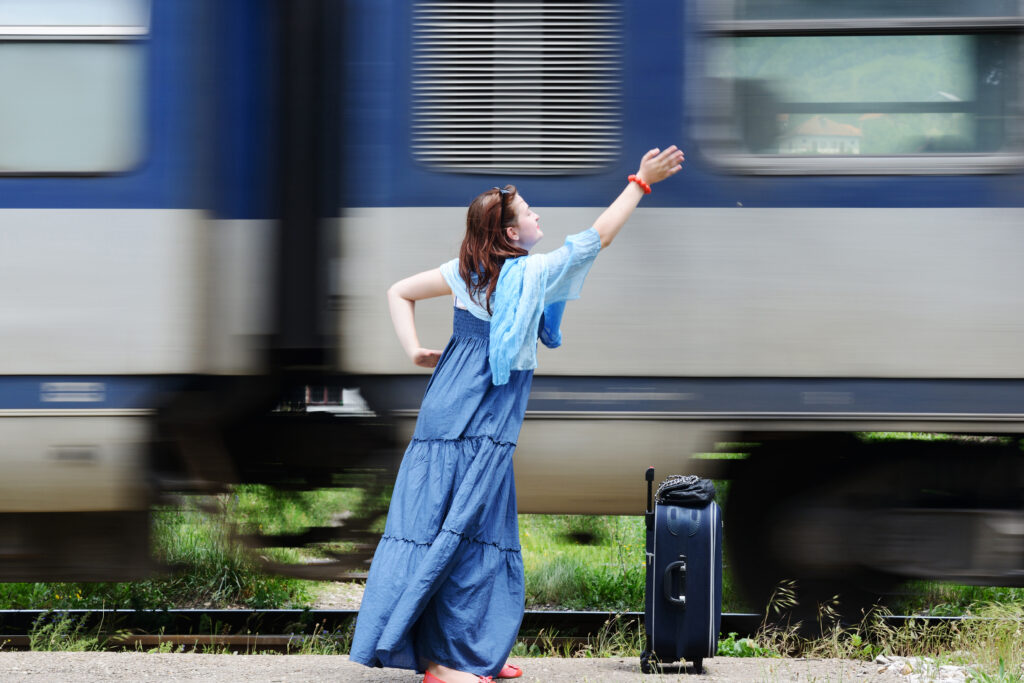
No one understands the need for safety quite like another woman. We’ve all spent years considering how we dress, behave, and what we carry with us to reduce our vulnerability. Who hasn’t found herself walking alone at night, clutching her keys like a weapon, ready to defend against a potential attacker? Who hasn’t felt a rush of anxiety upon hearing footsteps behind her, wondering if they’re a threat or just someone going about their day? Unfortunately, feeling completely safe is something many women miss out on—a reality that’s often not understood by men. But that shouldn’t stop us from embarking on solo travel! With careful planning and a focus on safety, we can explore the world confidently. Preparation It’s vital to thoroughly research your destination before you set off. Familiarise yourself with everything from safety tips, local customs, and travel advisories to potential issues related to your insurance and documentation. Remember, knowledge is power. The more you know about your destination, the more empowered you’ll feel. If you’re still deciding where to go, consider researching destinations that are known for being safe for solo female travellers. Once you’ve chosen your destination, dive into specifics. Identify the safest areas to stay and be aware of any common scams that might catch unwitting tourists off guard. Don’t forget to review your government’s travel website—it offers valuable insights into potential safety risks across the globe. Australian government travel advisory US government travel advisory UK government travel advisory Canadian government travel advisory You need to prepare your travel insurance and your documentation. Is your passport ready to go? Does your travel insurance cover the destination and any valuables you intend to take with you? Does it cover all activities you plan to do – you usually need to notify them about anything high risk, such as skiing. Always make sure your travel insurance information is accessible – I keep mine on my phone but what if my phone breaks or is stolen? I can also access it from my iPad and laptop, but you may feel safer with a hard copy backup. You should also keep a copy of your passport, your hotel address and local emergency numbers as a backup too. Learn a little of the language, if the country you are going to does not speak the same language as you. Even just please, thank you, hello, goodbye can make you feel more comfortable and less out of place. Update your ICE contact in your phone. Make sure it is accessible if you were to need medical attention whilst unconscious – most phones from the last few years can do this, so research how to do it on yours. And finally, save offline maps in Google maps in case you don’t have wifi or a network accessible where you are going. Packing A top tip here is to avoid overpacking. Ensure you can handle your own bags comfortably, as you’ll need to keep them with you in public toilets and other tight spaces. You won’t want to rely on others for assistance, because this can increase the risk of theft. Place an Apple Air Tag or similar device in all your bags. This way, you can always monitor their location. Use physical luggage tags with minimal personal information; I just put our surname, “Linke” and Michael’s mobile phone number on ours. I don’t want someone seeing a female name, or address details on my tags. Or being able to send me harassing texts or photos. Be smart about what you pack. Leave behind any sentimental items that cannot be replaced. This way, if anything goes missing or gets stolen, you can rely on your travel insurance for replacements. Ensure you check whether you need to itemise valuable items, such as cameras, with your insurer. Refrain from taking and wearing expensive jewellery or flashy clothing. These items can attract unwanted attention, leading thieves to assume you’re carrying a lot of cash. Always pack your valuables in multiple locations. Keep cash and credit cards in separate spots, so you have a backup if something gets lost or taken. Consider using RFID-blocking sleeves for your cards and passport, for added protection. Your medications may be valuable on the black market so protect them too! As for safety gadgets, consider packing a few items that can provide an extra layer of security. For instance, a portable door lock can secure your hotel room, while portable alarms or motion-activated lights can keep unwelcome visitors at bay. Some travellers even swear by using an old phone as a webcam in their hotel room, along with an app like Alfred, to monitor for any unexpected intruders while they are out. I’ll link all the gadgets I’m aware of in the description below, so feel free to check them out. Transport and tours Staying aware whilst navigating transportation is critical. Using rideshares like Uber can offer a sense of safety, but it’s essential to verify that the license plate matches what you see in the app. If you have luggage in the boot – trunk for Americans – wait until the driver exits the vehicle before you do, to avoid them driving off with your possessions. If you are hailing a taxi, take a photo of the licence plate before you get in. And whether it’s an Uber or a taxi, if you’re in an unfamiliar location follow along on a map to make sure you aren’t being taken to the wrong place! If traveling from home to the airport with luggage, which makes it obvious that I’m going away, I often have a fake phone conversation with a friend to talk about them housesitting with their big scary boyfriend—this trick can deter potential house breakers. When booking tours, choose reputable companies with positive reviews, and if it helps your sense of security, look for options tailored specifically for women. Always have a plan in place for what happens if you get separated from the group. In general, exercise
Airport Secrets: Tips for a Smooth Travel Experience

Travelling can often be overwhelming, especially when it comes to navigating the airport. Today, I’m excited to share some essential secrets about airport security, airplanes, and the check-in process that are sure to surprise you. Get ready to transform your next airport experience from frustrating and stressful to smooth and enjoyable! And stick around until the end for a packing tip that will truly amaze you! The Airport Experience: Preparing for Security Welcome to Linke Lifestyle! I’m Mardi, and I’m here alongside my husband, Michael, to share the wealth of travel experience we’ve gathered over the years, ensuring your holidays are not just enjoyable but truly unforgettable! Throughout my journeys, I have found that the airport experience can often be the most stressful part of travelling. But fear not! With my tips and tricks for security and boarding, along with some insider secrets about aeroplanes, you’ll be well-prepared for your next adventure. Navigating Airport Security Going through security can be stressful, as you juggle your bags, remove shoes, and try not to slow down the line, all while feeling that familiar pressure! To ease this process, BE PREPARED! If you’re flying from an airport you haven’t visited before, take the time to research security procedures. A quick online search can reveal what items you need to remove and what’s required. Pro Tip: Keep any items that need to be removed from your bag easily accessible. For instance, while preparing to fly to Europe, I packed my laptop in my rollaboard suitcase, thinking it wouldn’t be an issue in Australia. Unfortunately, in Singapore, I discovered that the laptop needs to be removed from the bag! Managing that in a crowded airport can be quite the challenge! Here’s another useful suggestion: remove anything that could be mistaken for a suspicious item. My husband, Michael, who has vision impairment, sometimes travels with a cane that he stows in his bag. We’ve encountered security issues because of this; they once mistook his cane for a weapon! Now, we make it a point to keep it visible to avoid unnecessary delays. Additionally, don’t wait until you reach the front of the line to empty your pockets! I prepare for security as soon as I arrive at the airport, placing everything into my personal item bag. This way, when I reach the screening area, it’s simply a matter of pulling out my liquids and placing my bags on the belt. Nothing frustrates seasoned travellers more than someone fumbling at the last moment! Water Bottles: Remember to EMPTY them! You don’t want to be that person scrambling to throw their bottle away at security. Understanding Liquid Restrictions When it comes to liquids, ensure they are in containers of 100ml or less—this equates to three ounces. It’s crucial to remember that it’s the size of the container that matters, not the amount of liquid inside! So, that nearly empty large tube of toothpaste? It’s unfortunately a no-go. Shoe and Belt Considerations If you often find yourself needing to remove your belt, consider investing in one with a plastic buckle. Michael discovered one on Amazon that allows him to keep his belt on, which I’ve also linked in the description below. For shoes, if you anticipate needing to take them off at security, opt for ones that are easy to slip off—avoid complex zippers and buckles! Interacting with Security A vital reminder: do not joke with security staff. An example of this occurred at the Met Museum in New York, where a man jokingly mentioned he kept a bomb in his bag during a security check. The personnel took him seriously, leading to an unnecessary commotion. Remember, humour is not appreciated in these situations! Once you’ve cleared security, move aside to gather your belongings without delaying the line, and don’t forget to stack your plastic bins! Ordaining Your Valuables: When sending your belongings through the x-ray, consider sending them in order of value—from least to most valuable—so you can keep an eye on your important items. Boarding Pass Security Did you know your boarding pass contains sensitive information? It could potentially be misused if it falls into the wrong hands. Be sure to shred or dispose of it securely once your flight is complete. If you see “SSSS” on your boarding pass, it indicates you have been selected for additional security screening. Be prepared to arrive at security a little earlier; these selections occur randomly. Michael experienced this when we travelled from Melbourne to LA, and though it took some time, the additional checks were hassle-free. Assistance for Passengers with Disabilities If you need assistance due to a disability, please don’t hesitate to request help from your airline in advance! Michael uses this service when he travels alone and sometimes when I accompany him as well. Due to his vision impairment, he finds navigating unfamiliar airports easier with a guide. I also request assistance in large airports, particularly when I experience sensory overload. This service was invaluable for us during our recent travels through Heathrow! Ready for Takeoff Now that you’ve successfully navigated security and boarded the plane, don’t forget to check out some of my flight tips videos in the playlist that will appear when this video concludes! Right now, however, let’s delve into some fascinating secrets about the aeroplane itself! Did you know that the cabin is pressurised to help us breathe at high altitudes? It’s more cost-effective for planes to fly at higher altitudes, but too much pressurisation can distort the aircraft’s structure over time. It’s a delicate balancing act to ensure our comfort while maintaining the aircraft’s integrity and keeping costs low. Hidden Crew Features Here’s an interesting fact: on longer flights, there’s often a hidden crew bedroom nestled in the roof space! If you’re curious, simply Google your aircraft type along with “secret crew bedroom” to uncover its location—you might even spot the access point yourself! And did you know there’s a secret lock on the outside of the toilet door? Flight attendants
What to Pack for Your Next Cruise: Essential Packing List and Tips
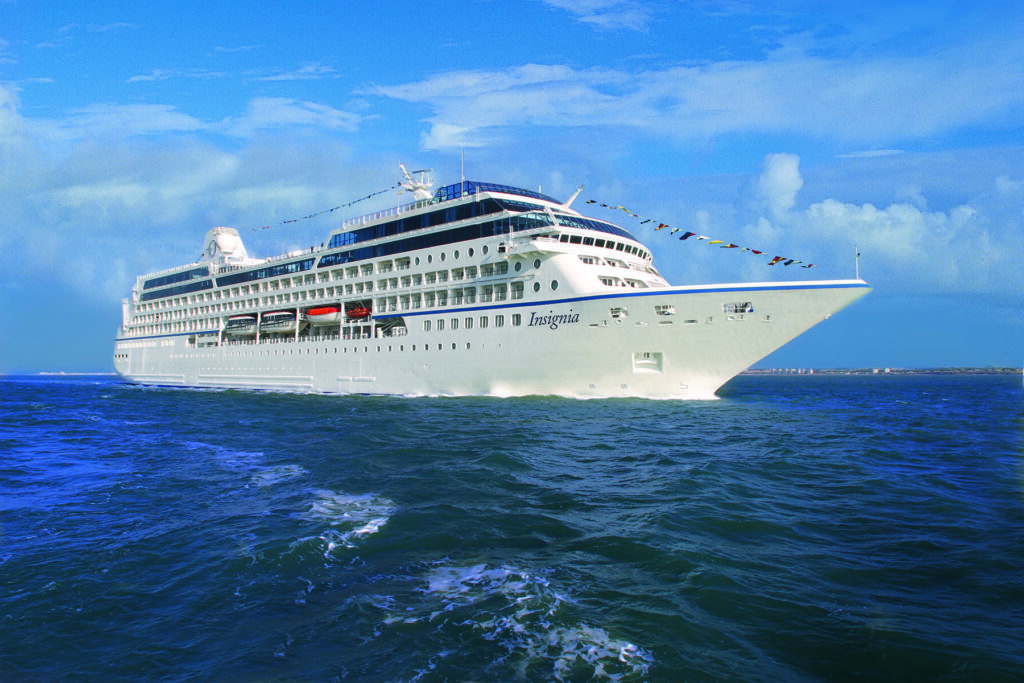
Congratulations on booking your cruise! As you prepare for your adventure on the high seas, the big question is: what should you pack? In this blog, I’ll share a comprehensive packing list filled with cruise essentials and Amazon must-haves. Plus, stick around for two bonus tips—one about what you should never pack and another packing tip for embarkation day! Cruise Packing Essentials Let’s dive right in with five essential items you’ll want to include in your cruise packing list: 1. Magnetic Hooks If you’ve done any research on cruise essentials, you’ve likely heard about the wonder of magnetic hooks. These clever little devices are invaluable for keeping your cabin organised since most cruise cabins feature metal walls, ceilings, and doors beneath their decorative finishes. As someone who values organisation – as my regular readers will know – I can’t recommend them enough. Just be sure to select strong hooks! For example, the magnetic hooks I use have a capacity of 110 pounds (approximately 50 kg). However, bear in mind that their weight-holding ability decreases when attached to walls compared to ceilings. You can utilise these hooks in numerous ways—hang bags, caps, wet swimmers, and even backpacks. They also work well for drying clothes or hanging over the door organisers. Additionally, consider using them to manage electrical extension cords or even hang blackout curtains! The potential uses are nearly limitless. I also suggest packing magnetic clips, which can be lifesavers for organising important documents such as the daily cruise schedule. 2. Your Cruise Card Your cruise card is another vital item. It functions like a credit card: serving as your cabin key, identification, and your method of spending money or using your drinks package while onboard. It’s crucial to keep this item with you at all times! Many cruise lines, such as Princess Cruises, have begun using medallions instead of traditional cards. However, for now, let’s focus on the classic cruise card. It fits conveniently in your pocket, but for those prone to misplacing it, a lanyard is a practical solution. You can easily find lanyards with clips or protective sleeves. Because lanyards irritate my neck (autism = sensory issues), I prefer a magnetic iPhone card holder that also works as a phone stand. This dual-purpose item means I always have my phone handy while keeping my cruise card secure. If you’re using a Princess medallion, there are various fun accessories available, including Air Tag holders that can help you keep track of your items. I use an Air Tag holder with a round carabiner, which I clip to my phone case – it has loops for a cross body strap, another travel essential! 3. Travel Medication Kit Next up is the all-important travel medication kit. While taking over-the-counter medicines is a wise decision for any trip, it’s especially crucial on a cruise. Two key reasons for this: When packing, consider including the following items: painkillers, antihistamines, antacid tablets, seasickness medication, Band-Aids, anti-diarrhoea pills, extra prescription medications, blister patches, antiseptic spray, and even hydration sachets. I store my travel pharmacy in a folding jewellery organiser to keep things neat and easy to access while taking up minimal luggage space. 4. Dress Code Considerations There’s often a misconception that formal attire is a must for cruise evenings. While some cruise lines maintain dress codes requiring tuxedos or evening gowns, this is not universal. Always check your cruise line’s website for specific dress codes as many casual venues still welcome guests in relaxed attire. If dressing up is part of your cruise experience, ensure you pack a nice outfit that you feel great in. Personally, I prefer not to lug around an evening gown—I dress up a nice outfit with accessories and appropriate shoes. Dressy flats or wedge heels are my go-to shoes for added stability on the ship, particularly when the ocean gets choppy. Depending on your cruise itinerary, there may be themed parties, such as “White Night” or “80s Night.” These events can often catch guests by surprise, so checking forums like Cruise Critic for insider information can be helpful. 5. Drinks Policy A delightful surprise for many first-time cruisers is that several cruise lines permit guests to bring their own wine and soft drinks onboard! Typically, this involves a restriction of one bottle of wine per adult. Make sure to check the specific policy of your cruise line to avoid issues. Always pack any drinks in your carry-on luggage since security will be inspecting all bags. Steer clear of trying to sneak spirits onboard; if caught, you risk confiscation and potential fines. Bonus Tip #1: Items You Should Never Pack Now for a critical piece of advice: one item you should absolutely avoid taking on a cruise is a power board with surge protection! These devices can interfere with a ship’s electrical systems and could potentially lead to fires in extreme cases. If you attempt to pack a surge-protected power board, it will likely be confiscated during security screening, and there’s a chance you won’t get it back. Instead, look for power adapters that allow multiple devices to plug in; these are typically permitted on board. Always double-check your cruise line’s list of prohibited items, as you may be surprised by what else might be included! Breaking news September 2024: Royal Caribbean have just banned multi-socket adapters. Having multiple USB A or C ports appears to be fine but not having multiple electrical sockets. Bonus Tip #2: Strategic Packing for Embarkation Day As for the second bonus tip, let’s discuss embarkation day packing. Just like when flying, you’ll have options for checking in luggage that will be taken to your cabin for you. However, if you choose to check your bags, ensure that you don’t pack anything you may need during the first few hours onboard the ship. Often, you won’t see your luggage until after dinner, and there might be times when you don’t have immediate access to your cabin upon boarding. Therefore, pack your carry-on strategically to
Avoid these cruise booking mistakes

Are you considering booking a cruise but feeling overwhelmed by the options available? You’re not alone! In this guide, we’ll explore some of the best cruise lines for your next adventure and discuss how to avoid common booking mistakes. Choosing the Right Cruise Line If you’ve read my previous post on Unlocking the Secrets to Your Dream Cruise Vacation you might recall my brief overview of different cruise lines. Today, we’ll delve deeper, focusing specifically on ocean cruise lines catering to diverse travel styles, budgets, and preferences. Within the English-speaking market, I’ve identified 23 cruise lines! Yes, 23! And there’s probably more I don’t know about. These cruise lines fall into three main categories: These percentages are the number of cruise lines in each category. However, if we looked at it by the number of ships, total passenger capacity, or gross tonnage, mass-market lines would dominate due to their massive ships, like Royal Caribbean’s Icon of the Seas. Generally, the higher you go on the luxury scale, the smaller the ships get. And more often than not, the higher the fare, the better the inclusions! So, don’t overlook luxury brands! By the time you add in the costs of meals, drinks, entertainment, wi-fi, and shore excursions, the differences may not be that significant—especially if you fancy a premium cabin or a ship-within-a-ship experience on a mass-market vessel! Mass-market ships are usually geared towards vibrant late-night entertainment, kids’ clubs, and activities for multi-generational families. They typically offer more restaurants, bars, and entertainment venues, along with fun activities like water slides, go-karts, and laser tag! But just because these ships are vibrant doesn’t mean you have to be a kid or a party animal to enjoy them! There’s something for everyone on these ships. That’s why they’re often the larger vessels sailing the oceans—well, they need to be to accommodate all that fun onboard! Premium cruise lines also boast multiple dining options, bars, entertainment, and some activities, but they tend to have a more subdued atmosphere. Think singers and musicians rather than big Broadway-style productions. Evening venues close earlier, too, creating a more relaxed vibe. Luxury lines, on the other hand, have the smallest ships, meaning fewer restaurants and activities. Activities may include classic shuffleboard and table tennis, and you might find they attract an older demographic, leading to a quieter atmosphere. But don’t be fooled—this doesn’t mean younger travellers should shy away! A big bonus is that smaller ships can access more ports without the need for tendering, and a greater variety of ports, unlike larger vessels. For me, the choice between these lines often hinges on whether you’re keen on exploring ports or soaking up relaxation. Port-heavy itineraries can be tiring but rewarding, with walking tours and sightseeing galore. Alternatively, if you’re yearning for a chill getaway, consider a cruise with more sea days or one where you stay on the ship while in port. When everyone else is in port you can enjoy the peace of a quieter ship! Michael and I are heading to North America later this year, and we’ve planned two cruises. We’ve selected a higher end premium line in a smaller ship for our Canada and New England trip, focusing on the ports. For our Bermuda cruise, however, we chose a mass-market ship because it’s heavy on the sea days, and we want to experience the amazing variety of onboard activities. We’re particularly hoping that Michael will be allowed to drive the go-karts, since his vision impairment means he doesn’t drive in real life, and he loves driving! And if you’re a beach lover, many mass-market and some premium lines have their own islands in the Caribbean where you can spend a blissful day during your cruise! And the bonus? Most meals, drinks, and Wi-Fi are included if you have a package—just like on the ship! So think about who’s coming along, what everyone loves, and whether you’re all about exploring ports or just unwinding on the ship! Consider your needs—are you more inclined to explore ports or unwind on the ship? Knowing this will help determine the best cruise line for you. For instance, if you’re looking for a peaceful retreat, a more relaxed cruise might be ideal. However, if you’re keen on sightseeing, opt for a port-heavy itinerary. Avoiding Common Booking Mistakes Now, let’s discuss some pitfalls to avoid when booking your cruise! Overlooking travel insurance Planning a holiday is exciting and fun, and let’s be real: no one wants to think about negative scenarios. However, it’s crucial to prepare for contingencies! Overlooking travel insurance can be one of the biggest mistakes you’ll make. In 2013, Michael had a major retinal detachment while we were in New York. Michael is nearly blind in one eye, and his so-called good eye is extremely short-sighted, with about 5% vision. The detachment occurred in that good eye! Had it not been fixed he would have been completely blind. Luckily, we were in New York—home to one of the best retinal surgeons in the world. Even now, over a decade later, Michael’s specialist in Australia still praises the incredible job that surgeon did. But let me tell you, it didn’t come cheap. The hospital alone was going to cost us over $30,000 US dollars, and then there was the doctor’s fees and medication. Thankfully, we had travel insurance, so we ended up paying very little out of pocket. But if we hadn’t? We would’ve needed to find that money, and there was no alternative—Michael had to undergo surgery immediately to save his sight. Now, picture yourself onboard a ship in the middle of the ocean and needing urgent medical care. You might be having a heart attack, a stroke, or have sustained a serious injury. And this can happen to anyone, regardless of age! If you require emergency treatment, not only will you (or your family) need to cover the medical costs, but you may also need to be airlifted off the ship—and trust me, that

